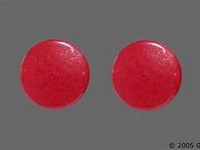Paracetamol

CLINICAL USE
Analgesia and antipyreticDOSE IN NORMAL RENAL FUNCTION
500 mg – 1 g every 4–6 hours(IV: if <50 kg, dose is 15 mg/kg)PHARMACOKINETICS
DOSE IN RENAL IMPAIRMENT
GFR (mL/MIN)
DOSE IN PATIENTS UNDERGOING RENAL REPLACEMENT THERAPIES
IMPORTANT DRUG INTERACTIONS
Potentially hazardous interactions with other drugsADMINISTRATION
Reconstition
–Route
Oral, rectal, IVRate of Administration
15 minutesComments
–OTHER INFORMATION
Beware sodium content of soluble tablets (1 tablet ≡ 18.6 mmol sodium)Nephrotoxic in overdose due to a reactive alkylating metaboliteMetabolites may accumulate in CKD 5; normal doses are used in CKD 5IV preparation starts working within 5 to 10 minutes with peak activity after 60 minutes.
See how to identify renal failure stages according to GFR calculation
See how to diagnose irreversible renal disease
Home








